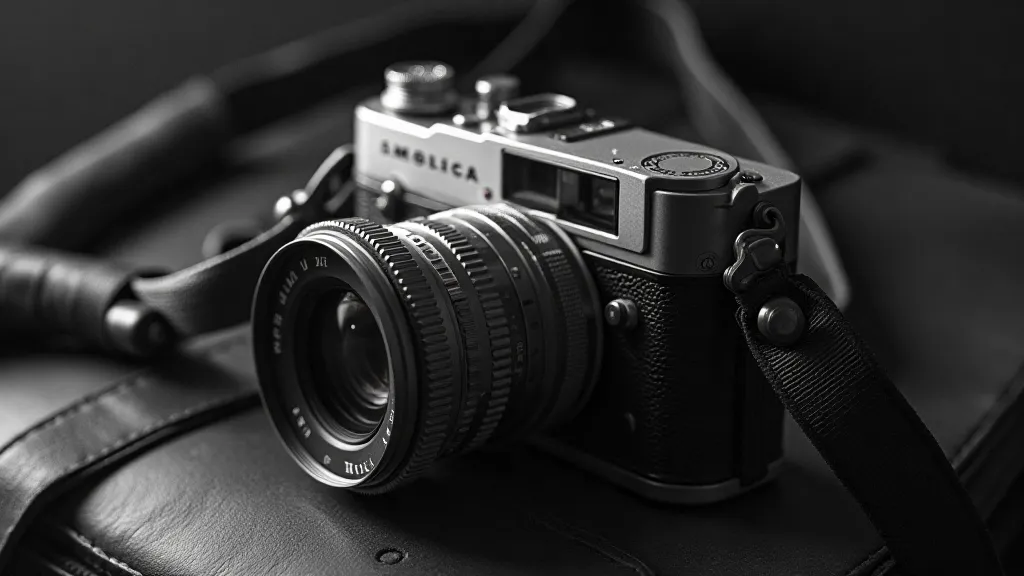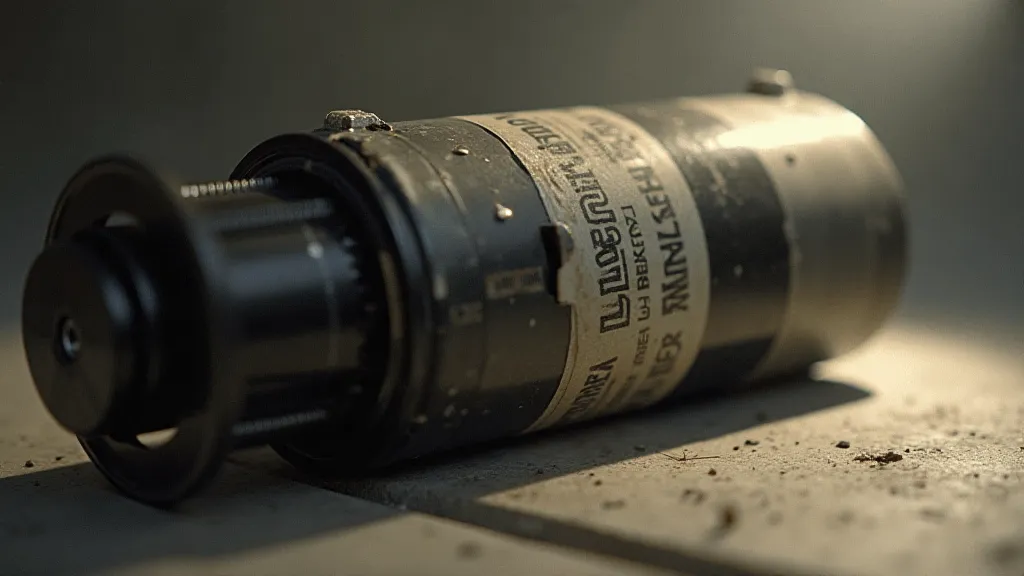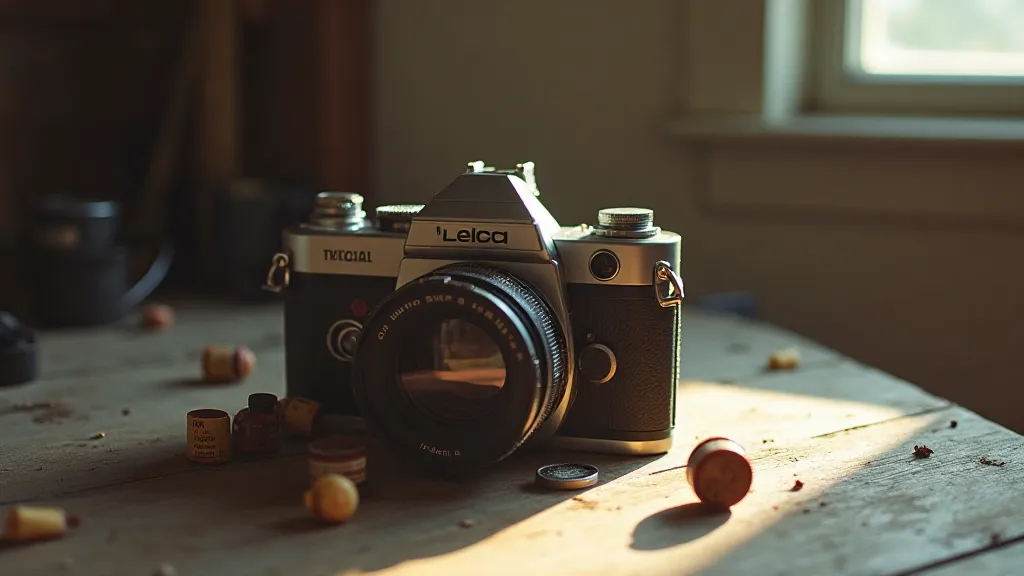The Grammar of Grain: Understanding Film Aesthetics in a Digital Age
In a world saturated with digitally perfect images, where sharpness reigns supreme and noise is an enemy to be vanquished, there's a quiet rebellion occurring. A return to something tactile, something imperfect, something undeniably human. It’s a rediscovery of the beauty found in film grain – that characteristic texture that coats images taken with vintage cameras, a visual signature that speaks of a bygone era and a different aesthetic sensibility. It's more than just "noise"; it's a crucial element in the grammar of photographic expression.
For those accustomed to the clinical clarity of digital photography, the concept of appreciating film grain might seem counterintuitive. Why deliberately choose an image that appears “flawed” when you can have one pristine and sharp? The answer lies in understanding that grain isn't a flaw at all. It’s a consequence of the physics of film – the microscopic silver halide crystals that react to light and record the image. The size and distribution of these crystals contribute to the visual texture we perceive as grain. Different film stocks have different grain characteristics; some are almost imperceptible, others boldly assertive, adding a raw, gritty feel to the picture. The type of camera, its age, the lighting conditions – all contribute to the final visual result.

A History Etched in Silver
Consider the mid-20th century, a golden age of photojournalism and street photography. Names like Henri Cartier-Bresson, Robert Frank, and Vivian Maier – masters of their craft – routinely embraced the aesthetic of film grain. Their images, capturing moments of profound humanity, wouldn't be the same without that characteristic texture. It wasn't a conscious decision to create "grainy" photos; it was simply the reality of the tools they used. But they quickly recognized that grain wasn’t detrimental; it *added* something. It gave their images a sense of authenticity, a tangible connection to the scene. It softened the edges, hinted at the ephemeral nature of the moment, and imbued the photographs with a sense of timelessness.
Think about the stark contrast of Robert Frank’s “The Americans.” The grainy, almost claustrophobic feel of his black and white images perfectly captures the feeling of alienation and displacement that he sought to convey. The grain wasn’t a distraction; it was integral to the message. Similarly, Vivian Maier's street photography, often discovered posthumously, benefits immensely from the film's texture. The grain lends an intimate and sometimes mysterious quality to her candid portraits, making them all the more compelling.
Beyond Noise: Mood and Texture
The appeal of film grain isn't just historical; it’s inherently aesthetic. In the digital age, we're bombarded with images that strive for absolute perfection, often resulting in a sterile and lifeless quality. Film grain offers a refreshing antidote. It adds texture – a visual equivalent of sandpaper or wood grain. It prevents the image from feeling flat and two-dimensional. It softens harsh shadows and highlights, creating a more pleasing tonal range. It provides a sense of depth and atmosphere.
The mood that grain evokes can be profound. It can suggest nostalgia, a yearning for a simpler time. It can impart a sense of melancholy or introspection. It can even convey a feeling of raw energy and immediacy. A photograph taken with a high ISO film stock, pushing its limits in low light, will exhibit a more pronounced grain, lending a feeling of urgency and intensity. Conversely, a photograph taken with a slower, finer-grained film stock will appear more delicate and romantic.
I remember the first time I truly appreciated film grain. I was experimenting with an old Pentax K1000, a camera my grandfather used for decades. I'm not a natural photographer; I tend to overthink things. But with that camera and a roll of Kodak Tri-X, something clicked. The limitations of the film – the grain, the reciprocity failure in low light – forced me to simplify my approach. I stopped chasing perfection and started focusing on capturing genuine moments. The grain wasn't a problem to be solved; it was a collaborator, adding character and soul to my images.

Collecting and Caring for Vintage Cameras
The resurgence of interest in film photography has, unsurprisingly, fueled a growing market for vintage cameras. These aren't just tools; they've become objects of desire – tangible links to a rich photographic heritage. However, collecting vintage cameras isn’t just about acquiring a piece of history; it’s about understanding and respecting the craft. Many of these cameras require a degree of care and maintenance that digital cameras simply don’t.
Light seals degrade over time, causing light leaks. Shutters can become sluggish or inaccurate. Rangefinders can become misaligned. Learning to diagnose and address these issues can be a rewarding experience, deepening your appreciation for the mechanical ingenuity of these classic cameras. There are numerous online resources and communities dedicated to vintage camera repair. Don't be afraid to get your hands dirty!
Furthermore, the film itself is crucial. While modern film stocks are readily available, exploring older film formulations can unlock unique aesthetic qualities. Keep in mind that older film may exhibit different characteristics – greater susceptibility to fogging, narrower dynamic range, and even subtle color shifts. Experimentation is key to discovering the perfect combination of camera and film to achieve your desired look.
Embracing the Imperfection
In a digital world obsessed with flawless imagery, the beauty of film grain provides a welcome alternative. It’s a reminder that imperfections can be beautiful, that limitations can spark creativity, and that the most compelling photographs often emerge from the spaces between the rules. The grammar of grain – that subtle texture that coats vintage photographs – is more than just a visual characteristic; it’s a testament to the enduring appeal of the analog experience. It's an invitation to slow down, to embrace the process, and to rediscover the joy of capturing the world through a lens – a lens that reveals more than just what’s in front of it, but also a glimpse into a different time and a different way of seeing.






